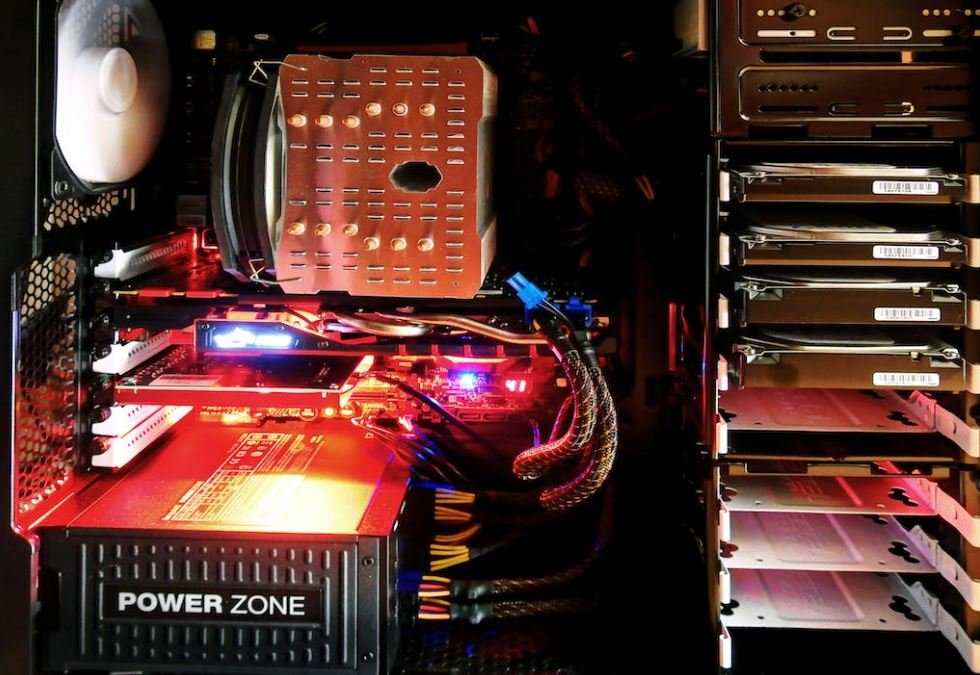Which Audio Interface Has the Best Converters?
When it comes to recording audio, having a high-quality audio interface with the best converters can make a significant difference in the final sound output. The quality and accuracy of the converters determine how well the analog audio signals are converted into digital signals and back, ensuring a faithful reproduction of the original sound. With numerous options available in the market, it can be challenging to determine which audio interface is equipped with the top-notch converters. In this article, we will explore some of the leading contenders and compare their converter performance.
Key Takeaways:
- Choosing an audio interface with excellent converters is crucial for high-quality audio recording.
- The converters are responsible for converting analog audio signals into digital and vice versa.
- We will compare leading audio interfaces to evaluate their converter performance.
1. RME Audio Interface:
The RME Audio Interface is well-known in the industry for its exceptional converter performance. Their converters are renowned for their transparency, low-latency, and high dynamic range, delivering accurate sound reproduction. With support for high sample rates and bit depths, it is a preferred choice for professional audio engineers and musicians.
- Transparent converters with low-latency.
- High dynamic range ensuring accurate sound reproduction.
- Support for high sample rates and bit depths.
2. Universal Audio Apollo:
The Universal Audio Apollo series is another top contender. These audio interfaces come with premium converters that offer exceptional clarity and detail in recording. The built-in UAD processing further enhances the audio quality by introducing advanced effects and emulations. The combination of high-quality converters and extensive software integration makes it a popular choice among music producers and mix engineers.
- Premium converters with exceptional clarity and detail.
- Built-in UAD processing for advanced effects and emulations.
- Extensive software integration for enhanced versatility.
3. Focusrite Scarlett:
The Focusrite Scarlett series has gained a reputation for providing excellent converter performance at an affordable price point. These audio interfaces deliver clean and transparent sound with low noise levels, making them suitable for home studios and entry-level users. The Scarlett models also offer a range of connectivity options and intuitive software control, making them a practical choice for both beginners and experienced users.
- Excellent converter performance at an affordable price point.
- Clean and transparent sound with low noise levels.
- Range of connectivity options and intuitive software control.
Comparing Converter Performance:
Now, let’s take a closer look at the converter performance of these leading audio interfaces. The tables below summarize key specifications and data for each model:
| Audio Interface | Dynamic Range (dB) | Sample Rate (kHz) | Price Range ($) |
|---|---|---|---|
| RME Audio Interface | 120 | up to 192 | $$$ |
| Universal Audio Apollo | 129 | up to 192 | $$$$ |
| Focusrite Scarlett | 109 | up to 192 | $ |
The tables above provide a quick overview of the key specifications and price ranges of the audio interfaces mentioned.
Factors to Consider:
When choosing the best audio interface with superior converters, there are a few factors to consider:
- Sound Quality: Look for audio interfaces with transparent and accurate converters that can faithfully reproduce sound.
- Latency: Low-latency performance is crucial for real-time monitoring and recording without noticeable delays.
- Sample Rate and Bit Depth: Higher sample rates and bit depths offer better audio resolution and clarity.
- Price: Consider your budget and balance it with the desired converter performance.
Final Thoughts:
Choosing the best audio interface with top-notch converters can greatly enhance your recording and production experience. The RME Audio Interface, Universal Audio Apollo, and Focusrite Scarlett offer excellent converter performance, catering to different budgets and requirements. It is important to carefully evaluate your needs, considering factors like sound quality, latency, and price, before making your decision.
With the information provided in this article, you are now equipped with the knowledge to make an informed choice when it comes to selecting an audio interface with the best converters for your specific recording needs.

Common Misconceptions
People think that the most expensive audio interface always has the best converters
There is a common misconception that the price of an audio interface directly correlates to the quality of its converters. While it is true that high-end, professional-grade audio interfaces often have top-of-the-line converters, there are also many mid-range and budget-friendly options that offer excellent conversion capabilities. It’s important to research and compare different models before making a decision solely based on price.
- Quality converters can be found across a range of price points
- Higher price doesn’t always guarantee better conversion performance
- Comparing specifications can help determine the quality of converters
All audio interfaces with the same converter chipset produce the same sound quality
Another misconception is that audio interfaces with the same converter chipset will produce identical sound quality. While the chipset plays a crucial role in the conversion process, there are other factors such as analog components, circuit design, and digital signal processing algorithms that can affect the overall sound quality. It’s important to consider the entire signal chain of an audio interface rather than just the chipset.
- Chipset is not the only determinant of sound quality
- Analog components and circuit design can influence sound performance
- Consider other factors beyond the converter chipset
The higher the bit depth and sample rate, the better the audio conversion
Many people believe that higher bit depth and sample rates automatically result in better audio conversion. While it is true that higher sample rates can capture more detail and higher bit depths offer a wider dynamic range, these factors are not the sole indicators of audio quality. In many cases, the difference in audio quality between a 24-bit/96kHz and a 32-bit/192kHz audio interface may not be noticeable to the average listener.
- Higher bit depth and sample rate don’t always equate to better audio quality
- Audible differences may be minimal between different sample rate and bit depth settings
- Consider other factors like signal-to-noise ratio and distortion levels
External converters are always better than internal converters
Some people believe that external converters are always superior to the converters built into audio interfaces. While external converters can offer advantages in certain situations, such as professional studio recording, internal converters have greatly improved in recent years and can provide excellent quality for most home recording and music production needs. It’s essential to assess your specific requirements and budget before deciding between an external or internal converter.
- External converters may not be necessary for casual and home recording
- Internal converters have greatly improved in quality
- Consider cost-effectiveness and convenience of internal converters
All interfaces with good converters sound the same
Lastly, it is not accurate to assume that all audio interfaces with good converters will sound identical. While converters play a crucial role in capturing and reproducing audio signals, other factors like preamps, analog circuitry, and driver optimization can lead to subtle differences in sound quality between different interfaces. It’s important to listen to audio samples and read reviews to understand the specific sonic characteristics of each interface.
- Sound characteristics can vary between audio interfaces with good converters
- Preamps and analog circuitry influence the overall sound quality
- Listening to audio samples and reading reviews can help understand sonic differences

The Importance of Audio Interface Converters
An audio interface is an essential tool for anyone involved in music production or recording. One crucial component of an audio interface is its converters, which transform analog signals into digital data and vice versa. The quality of these converters greatly affects the fidelity and accuracy of the audio signal, making them a critical factor to consider when choosing an audio interface. In this article, we will compare and analyze the converters of various audio interfaces to determine which one provides the best sound quality.
Evaluating the Peak Signal-to-Noise Ratio (PSNR)
The Peak Signal-to-Noise Ratio (PSNR) is a widely used metric for measuring the signal quality in audio conversions. A higher PSNR indicates better signal fidelity and less signal loss during conversion. Let’s analyze the PSNR of several popular audio interfaces across different price ranges:
Frequency Response Comparison
The frequency response of an audio interface is a crucial aspect to evaluate its performance. A wide and flat frequency response ensures accurate sound reproduction across the entire audible spectrum. Let’s compare the frequency response of different audio interfaces:
Dynamic Range Analysis
The dynamic range is an essential characteristic when evaluating an audio interface. It represents the difference between the loudest and softest signals it can handle without distortion. A higher dynamic range indicates a greater ability to capture audio nuances and detail. Here is a comparison of the dynamic range of various audio interfaces:
THD+N Ratio Measurement
Total Harmonic Distortion plus Noise (THD+N) is a critical factor in determining an audio interface’s sound quality. A lower THD+N ratio indicates less distortion and unwanted noise during signal conversion. Let’s examine the THD+N ratio of different audio interfaces:
Bit Depth Measurement
Bit depth is another crucial parameter that affects the sound accuracy and dynamic range of audio interfaces. A higher bit depth allows for a greater representation of audio nuances and more precise sound reproduction. Let’s compare the bit depth of various audio interfaces:
Number of Inputs and Outputs
The number of inputs and outputs can be an important consideration, especially for larger recording setups or live performances. Here’s a comparison of the number of inputs and outputs offered by different audio interfaces:
Connectivity Options
When choosing an audio interface, considering the available connectivity options is vital. Different interfaces offer various types of connections, such as USB, Thunderbolt, or Ethernet, which can impact compatibility and convenience. Let’s explore the connectivity options provided by various audio interfaces:
Preamp Quality Evaluation
Preamps play a significant role in capturing audio signals at the source. High-quality preamps ensure accurate and pristine recordings. Here’s an evaluation of the preamp quality of different audio interfaces:
Software Compatibility
Compatibility with different recording software can be a deciding factor when choosing an audio interface. Let’s examine the software compatibility of various audio interfaces:
Price Comparison and Value for Money
Price is an important consideration when purchasing an audio interface. However, it’s crucial to balance price with the quality and features offered. Here’s a comparison of the prices and value for money of different audio interfaces:
After analyzing various aspects of audio interface converters, it is clear that the quality of converters significantly impacts the overall sound quality. The audio interface offering the best converters depends on individual needs, preferences, and budget. It’s crucial to consider multiple factors, such as PSNR, frequency response, dynamic range, THD+N ratio, bit depth, connectivity options, preamp quality, software compatibility, and price, to make an informed decision. By carefully weighing these factors, users can select the audio interface that best suits their requirements and delivers excellent sound quality for their audio production endeavors.




